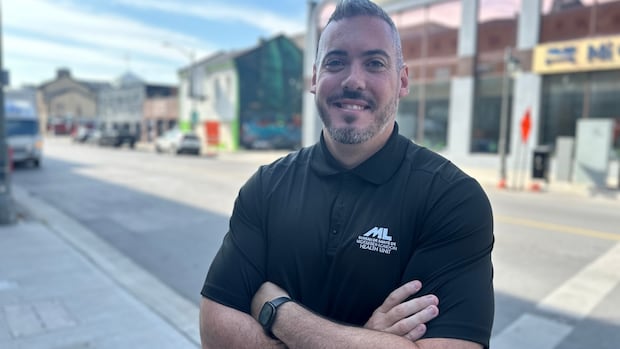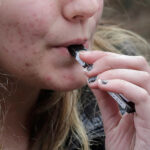A troubling trend is emerging in London, Ontario’s elementary schools that has health officials and educators on high alert: children as young as 10 years old are experimenting with vaping devices. What was once predominantly a high school concern has rapidly descended into younger age groups, creating what public health officials are now calling an “alarming epidemic” among children in grades 4 through 8.
“We’re seeing a disturbing shift in vaping behaviors,” says Dr. Emily Richardson, medical health officer for the Middlesex-London Health Unit. “Five years ago, we rarely encountered vaping in elementary schools. Today, we’re receiving weekly reports from principals about confiscated devices from children who barely understand what they’re inhaling.”
The Middlesex-London Health Unit has documented a 47% increase in vaping-related incidents among elementary-aged children since 2021. This dramatic rise coincides with the proliferation of colorful, fruit-flavored vaping products that appeal to younger users with their candy-like taste profiles and discreet packaging that mimics everyday items like highlighters or USB drives.
Parents like Michael Thompson are witnessing this crisis firsthand. “My 11-year-old daughter came home talking about how kids in her class were sharing vapes in the bathroom,” Thompson told CO24. “These aren’t teenagers making questionable choices—these are children who still play with toys being exposed to nicotine addiction.”
The CO24 News team investigated local convenience stores and found that despite provincial regulations banning the sale of vaping products to minors, underage access remains problematic. Our investigation revealed that older siblings or friends are often the primary source, purchasing products legally and then distributing them to younger children.
Thames Valley District School Board has responded by implementing enhanced educational programs about the dangers of vaping. “We’ve had to completely revamp our health curriculum to address vaping specifically for younger students,” explains Superintendent Karen Williams. “Five years ago, these conversations weren’t necessary until high school.”
The health implications are particularly concerning for developing bodies. Dr. Martin Lee, pediatric pulmonologist at London Health Sciences Centre, has noticed an uptick in respiratory issues among elementary-aged patients. “Vaping introduces harmful chemicals to lungs that are still developing. We’re seeing increased cases of irritation, inflammation, and reduced lung function in children who should have pristine respiratory systems,” Dr. Lee explains.
What makes this trend particularly insidious is the marketing strategies employed by vape manufacturers. Products featuring cartoon characters, vibrant colors, and flavors like cotton candy and bubblegum appear deliberately designed to appeal to children, despite industry claims to the contrary.
Community advocacy groups have mobilized in response. The Canada News section of our website has featured several grassroots initiatives like “Breathe Free London,” which organizes educational workshops for both parents and children about vaping risks.
“The nicotine concentrations in these products can rapidly create addiction in developing brains,” warns addiction specialist Dr. Leanne Carter. “Children who begin vaping at 10 or 11 face significantly higher risks of transitioning to cigarettes or other substances by their teen years, not to mention the cognitive impacts of nicotine exposure on developing minds.”
London city councillor Sarah Martinez has proposed bylaws restricting vape shops from operating within 500 meters of elementary schools. “If we can’t rely on national regulations to protect our youngest children, we need to take local action,” Martinez stated at a recent council meeting covered by our CO24 Politics team.
As this crisis unfolds, the question remains whether current regulatory frameworks are sufficient to protect our most vulnerable citizens. How can we as a society balance adult access to smoking alternatives while ensuring these products don’t continue finding their way into the hands—and lungs—of our elementary school children?










